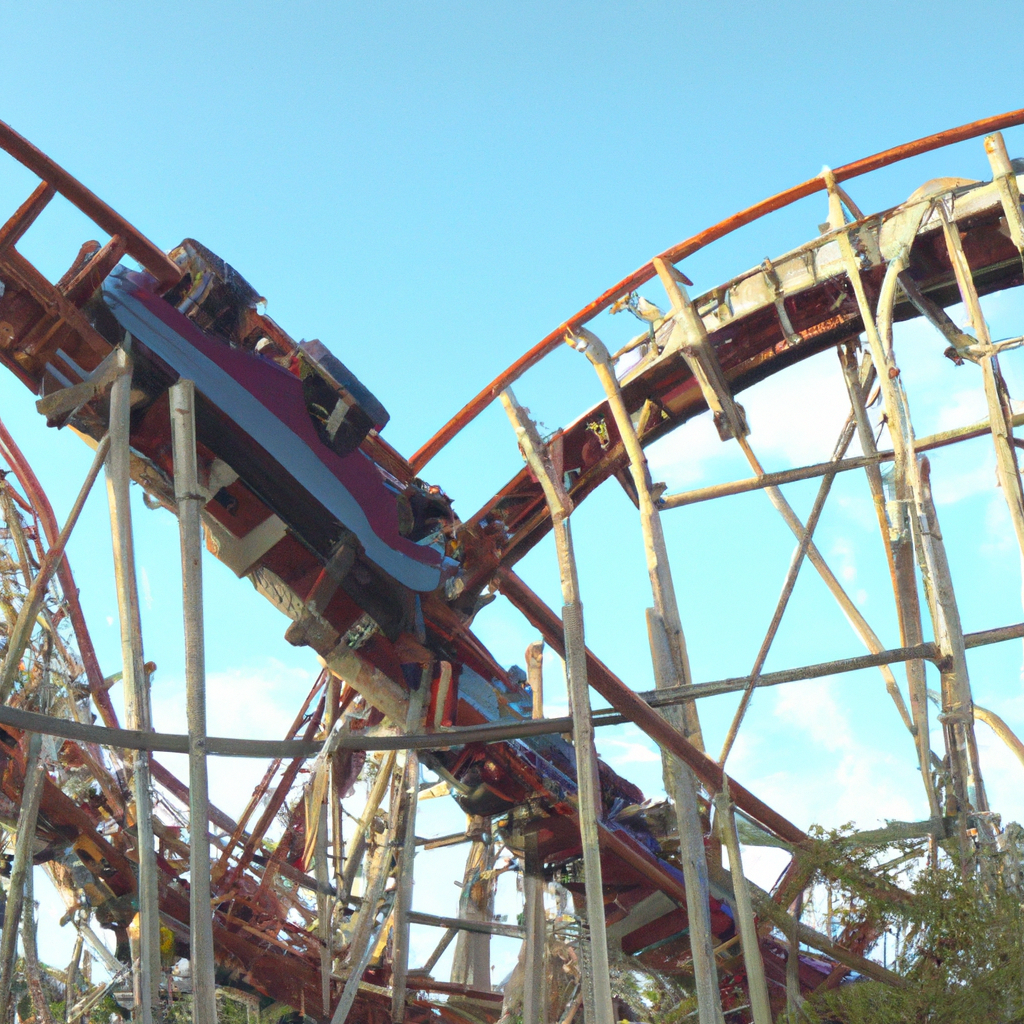Roller coasters are one of the most popular rides at any amusement park. They are thrilling, exciting, and often terrifying. But, how does a roller coaster work? The answer lies in the physics of roller coasters, roller coaster design, and the roller coaster’s history. In this article, we will explore all of these aspects of roller coasters to give you a thorough understanding of how they work.
The Physics of Roller Coasters
Roller coasters work thanks to the laws of physics. The two most important laws that apply to roller coasters are Newton’s laws of motion and the law of conservation of energy.
Newton’s first law of motion states that an object at rest will remain at rest, and an object in motion will remain in motion unless acted upon by an external force. This law is important when it comes to roller coasters because it explains how the coaster stays on the track.
When the coaster is at the top of a hill, it has potential energy. This means that it has the potential to move because of its position. As the coaster begins to move down the hill, its potential energy is converted into kinetic energy, which is the energy of motion. The coaster gains speed as it goes down the hill, and this is where Newton’s second law comes into play.
Newton’s second law states that the force acting on an object is equal to its mass times its acceleration. This means that the more force applied to an object, the more it will accelerate. In the case of a roller coaster, the force is gravity, which is pulling the coaster down the hill. The faster the coaster goes, the more force it has, and the more it accelerates.
The Law of Conservation of Energy
The law of conservation of energy is also important when it comes to roller coasters. This law states that energy cannot be created or destroyed, only transferred from one form to another. In the case of a roller coaster, the potential energy at the top of the hill is transferred into kinetic energy as the coaster moves down the hill.
As the coaster moves up and down hills, it is constantly transferring energy between potential and kinetic. When the coaster reaches the end of the track, it has lost most of its kinetic energy and comes to a stop. This is where the law of conservation of energy comes into play again. The coaster’s kinetic energy is transferred into heat energy as the brakes slow it down.
Roller Coaster Design
The design of a roller coaster also plays a significant role in how it works. There are several different types of roller coasters, including wooden coasters, steel coasters, inverted coasters, and more. Each type of coaster has its own unique design features that contribute to its function.
Wooden coasters, for example, are made of wood and are known for their rough, bumpy ride. Steel coasters, on the other hand, are smoother and can do things that wooden coasters cannot, such as inversions. Inverted coasters have the riders hanging below the track, which provides a unique experience.
The track design is also important. Different types of curves, drops, and hills can create different ride experiences. For example, a steep drop will create a feeling of weightlessness, while a tight turn will create a feeling of g-forces pushing against the body.
Roller Coaster History
Roller coasters have been around for over 200 years. The first roller coaster was built in Russia in the early 1800s and was called the “Russian Mountains.” This coaster was made of ice and had small hills that riders would slide down on sleds.
The first roller coaster in the United States was the Mauch Chunk Switchback Railway, which opened in 1827 in Pennsylvania. This coaster was made of wood and had a series of hills that riders would coast down in cars.
Over the years, roller coasters have continued to evolve and become more complex. In the 1950s, steel coasters were introduced, which allowed for more elaborate designs, such as loops and corkscrews. Today, roller coasters are some of the most popular rides at amusement parks around the world.
Conclusion
In conclusion, roller coasters work thanks to the laws of physics, roller coaster design, and roller coaster history. The combination of potential and kinetic energy, along with the force of gravity, allows roller coasters to move along their tracks. The design of the coaster, including the track and the cars, also plays a significant role in how it works. And, the history of roller coasters shows how they have evolved over the years to become some of the most thrilling rides at amusement parks today.







